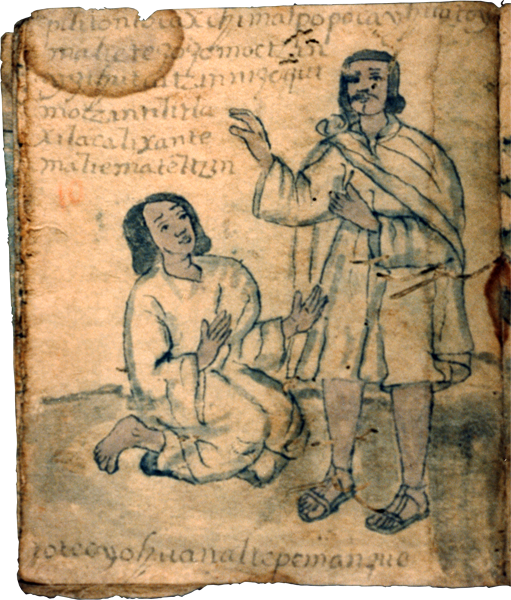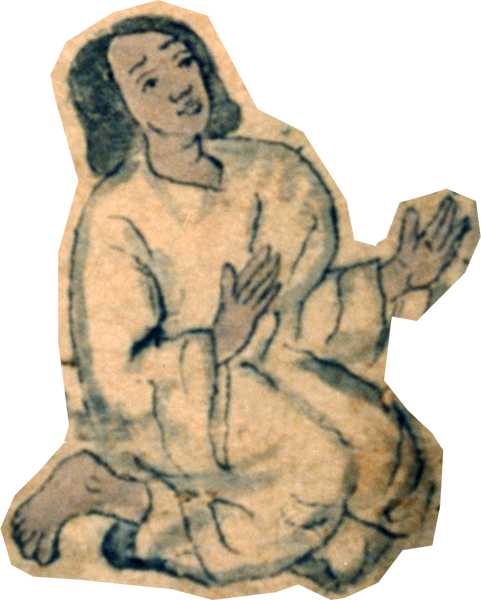f. 11v., indigenous woman seated (Spanish colonial times)
This is a detail of an indigenous woman. The positioning of her legs underneath her is somewhat typical, posture for a Mesoamerican woman, although the legs often went straight to the back, under her rear end. Her lack of shoes is not unusual. She wears the white cotton clothing that was known in the Spanish colonial period, although it may have been more typical of men. Women often wore handwoven blouses called huipiles in Spanish (from huipilli, in Nahuatl) or quechquemitl, with indigenous designs. In the text we learn that this is doña Maria Teçoçomoctzin. The gesturing may be a pictorial indication of her status or authority. A noblewoman such as this might have had her hair styled differently, if Nahua, with two bumps or knots at the top of her head.
mujer indígena sentada (tiempos coloniales Españoles)
Detalle de una mujer indígena. La posición de sus piernas metidas bajo ella es una postura típica de una mujer de Mesoamerica, aunque las piernas generalmente estaban derechas hacia atras, en la parte de atras. Su carecer de zapatos, no es inusual. Ella viste la ropa blanca de algodón que era conocida en el período colonial Español, aunque puede que era más típico de hombres. Las mujeres usualmente vestían blusas tejidas a mano, llamadas huipiles en Español (de huipilli, en Nahuatl) o quechquemitl, con diseños indígenas. En el texto aprendemos que ésta es doña Maria Teçoçomoctzin. Sus gestos pueden ser una indicación ilustrativa de su estatus o autoridad. Una mujer noble como esta hubiera podido tener un estilo diferente de cabello, si Nahua, con dos bultos o nudos arriba de su cabeza.

